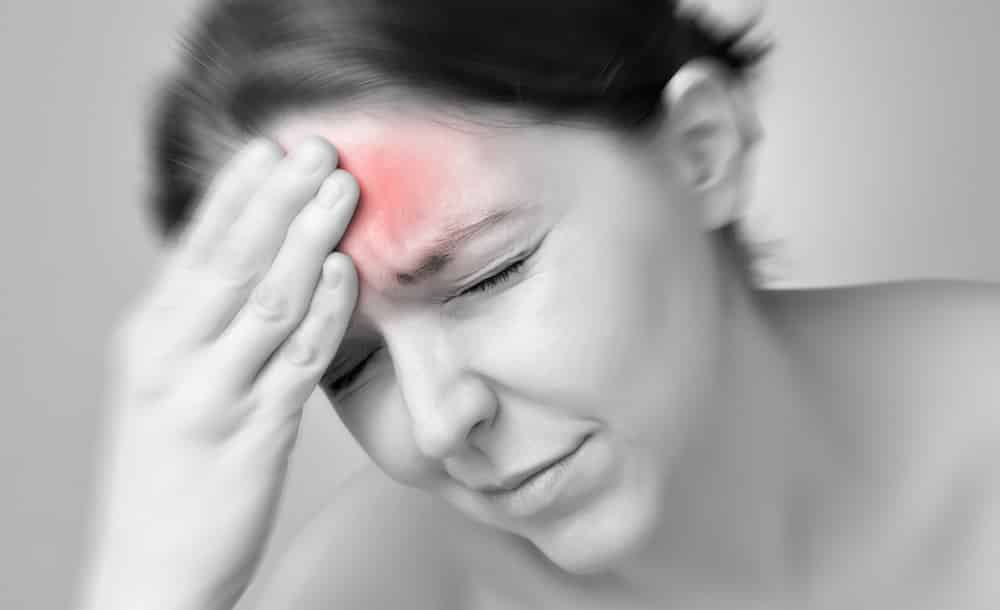While the cause of migraine headaches is still not completely understood, what is not in dispute in the crippling effects of the condition. One of the more popular theories suggests that it is a vascular type headache. Constriction of the blood vessels within the brain is thought to produce neurological symptoms like the visual aura that is associated with some migraines. Dilation of the same blood vessels then follows leading to stimulation of pain nerve endings in the arterial wall and surrounding tissue producing the headache.
Recent research has shown that chiropractic treatment is effective in the management and cure of both common and classical migraine.

FACTS RELATING TO MIGRAINE
One in every 4 households have at least 1 migraine sufferer
There can be various triggers for migraines including stress, hormonal changes, flickering or glaring lights, foods, weather and changes in sleeping habits
Average age is between 25 to 55 years old
Research has shown that chiropractic treatment is effective in the management and cure of both common and classical migraine
There are different types of migraines with varying symptoms
Treatment for migraines includes a combination of lifestyle changes as well as therapeutic intervention
Migraine and muscular tension headaches can work in a cyclic pattern, one feeding the other. The intense pain of a migraine can trigger pain through prolonged muscular contraction. Thus a migrainous attack provides the stimulus for a muscular cervicogenic headache. The increased tension within the muscles of the neck then affects the biomechanics (movement) of the neck thus building the blocks of another migraine headache. And so the cycle begins.
Diagnosis of a migraine is based on a variety of symptoms these include repeated attacks with more than 5 attacks lasting 2 hours to several days, the pain is rated moderate to severely painful, often only one side of the head hurts, sufferers commonly experience loss of appetite, nausea, and vomiting while a visual phenomenon is often experienced immediately before the onset of the migraine.
Many people suffer from migraines. There are 28 million migraine sufferers aged 12 years and above in the United States with 21 million women and 7 million men. One in 4 households has at least 1 migraine sufferer with most people with aged between 25-55 years of age
There are more than 1 types of migraine headaches. These include
- Classic migraine
- Basilar migraine
- Migraine with/without aura
- Chronic migraine
- Cervicogenic migraine
- Common migraine
Many migraine sufferers report experiencing a variety of symptoms before or during an attack. These are numerous in number and varied in nature. Such symptoms include nausea and vomiting, diarrhea, light sensitivity, dizziness, sensitivity to sound and difficulty thinking/concentrating.
Triggers for migraines can be wide and varied. However there are some common triggers that have been identified. Changes in sleeping habits, stress, weathered wine, caffeine, cheese and chocolate, glaring or flickering lights and hormonal changes have all been identified by various studies as significant risk factors for those people susceptible to migraines.
Treatment for migraines includes a combination of lifestyle changes as well as therapeutic intervention. Ensuring a good night’s sleep as well as engaging in regular exercise and avoiding triggers such as caffeine, red wine and chocolates can all help. Various therapies have also been proven to be beneficial with massage, diet modification and chiropractic an example.
Recent research has shown that chiropractic treatment is effective in the management and cure of both common and classical migraine. Cervical spine manipulation was associated with significant improvement in headache outcomes in trials involving patients with neck pain and/or neck dysfunction and headache.
An Australian study published in the February, 2000 issue of the Journal of manipulative and Physiological Therapeutics found that migraine headache patients experienced significant relief under chiropractic care.
In general, the participants in the study reported a significant decrease in the frequency, duration, disability and amount of medicine they used compared with people in the control group who did not receive chiropractic care.
50% of the participants receiving chiropractic care reported significant improvement in the sickness level of their migraines. 22% of the participants reported more than a 90% reduction of their migraines as a result of the adjustments.
